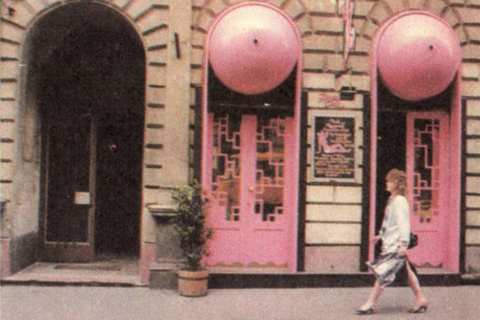Henri Matisse is one of the most versatile artists – he not only painted, but also created graphics, book illustrations, sculptures and paper cut-outs, a completely new form of art. His one-line drawings are also among the most popular tattoo designs, and his paintings are so colourful that they fill even an all-white space with life. Based on the works held at the Pompidou Centre in Paris, the Henri Matisse – The Colour of Ideas is the painter's first exhibition in Hungary.
You can get into a completely meditative state by watching how Matisse drew a portrait or made his cut-outs – you can see videos of both at the exhibition presenting the French painter’s oeuvre. The internet is also full of examples of how how the master created, most of them taken towards the end of his life, sitting, drawing on the wall with a long stick, or making his famous paper collages in bed.
More than 150 works can be seen at the exhibition of the Museum of Fine Arts, not only paintings and drawings, but also sculptures and reproduced graphic works, art books and cover designs.
This exhibition is so rich in colour, form and theme, so overwhelming that you ignore the fact that famous works such as La Danse or The Joy of Life are not on display.
Based on the collection held at the Pompidou Centre in Paris, the
exhibition presents the work of Henri Matisse in eight chronological and
themed sections, while exploring issues that concerned Matisse, such as the
relationship between line and colour or the relationship between form and
interior.
Matisse always looked for the colour of ideas, the intensity and
purity of colour, as well as the simplest representation of thought. He found
the latter in his line drawings.
Perhaps one of the most famous is his series of human faces, masks
outlined in black, where he was concerned with the universal sign of a face
reduced to the extreme. And no matter how fashionable thin line drawing and
tattoos are now, Matisse (and, of course, Picasso, too) already took the style
to its peak in the 1940s.
What’s more, he created film-like art books where he found a theme, a still life, a female figure or another motif according to different letters, and began to vary them. The contour drawings of few lines, poem and book illustrations became important to him after a life-saving operation, which took him years to recover from.
We feel this vibrancy and intensity in Algerian Woman and in the Odalisque variations – you can stand for long minutes in front of the Odalisque in Red Culottes, because there are so many different colours and patterns on it that the tapestries in the background are almost moving.
Although this picture was painted during the years he spent in Nice, Matisse would have experienced the Oriental and Arab atmosphere and motifs when he visited Algeria and Morocco to gather inspiration.
Walking among the paintings and sculptures, Matisse’s favourite motifs are strikingly repeated, albeit in different variations, but interiors, female figures, odalisques – he painted about 50 of these between 1919 and 1929 – windows and doors keep coming back. It is worth studying Interior in Yellow and Blue, he created in the 1940s, when he returned to discover the mysteries of painting for himself.
Experimentation has always been characteristic of his, so we also see
more radical works in his oeuvre, such as White and Pink Head, which nods towards
the avant-garde, or the French Window at Collioure, which is dominated by black –
it is interesting that Matisse also included black among the bright, shining
colours.
If you look closely, you can even see that he originally painted the
landscape from the balcony, but later painted it all black. The picture only
became known in the 1960s, when the American abstract expressionists discovered
Matisse’s radical period for themselves.
Speaking of experimentation, there are the famous gouache paper cut-outs
he worked on at the end of his life. In this creative method, he first coloured
the paper with gouache – usually a matte topcoat – and then cut and formed the
composition into the desired shape.
He also used this method to create his art
book Jazz, which he began working on in 1943, initially as a ‘book about colours’
and as an experiment in high-quality reproductions. In the 1947 edition, the
colour panels alternate with handwritten pages, and the whole thing is a bit
like a modern version of a medieval codex.
Event information
Henri Matisse – The Colour of Ideas
Museum of Fine Arts
1146 Budapest, Dózsa György út 41
Open: until 16 October Tue-Sun 10am-6pm
Tickets here



